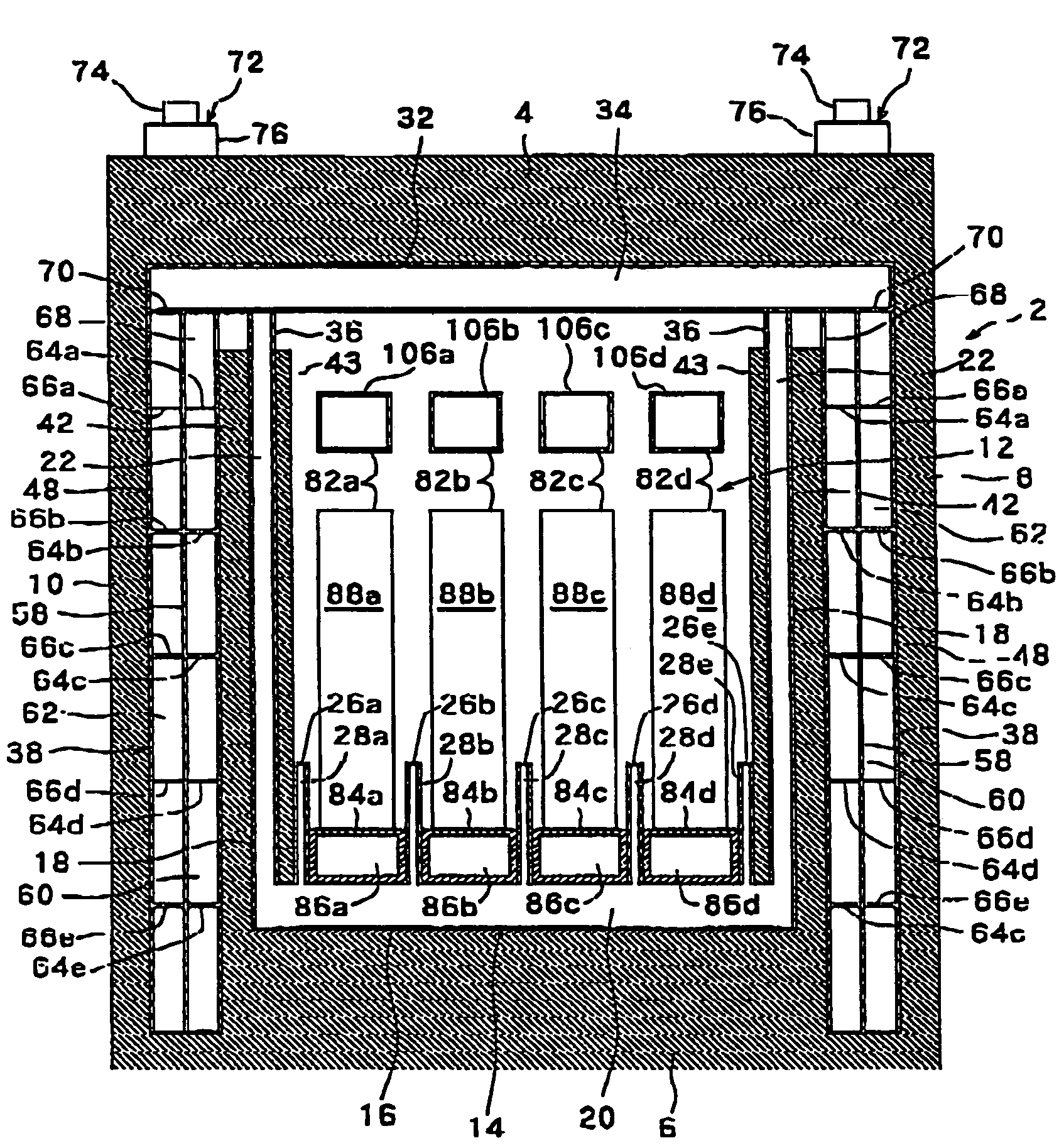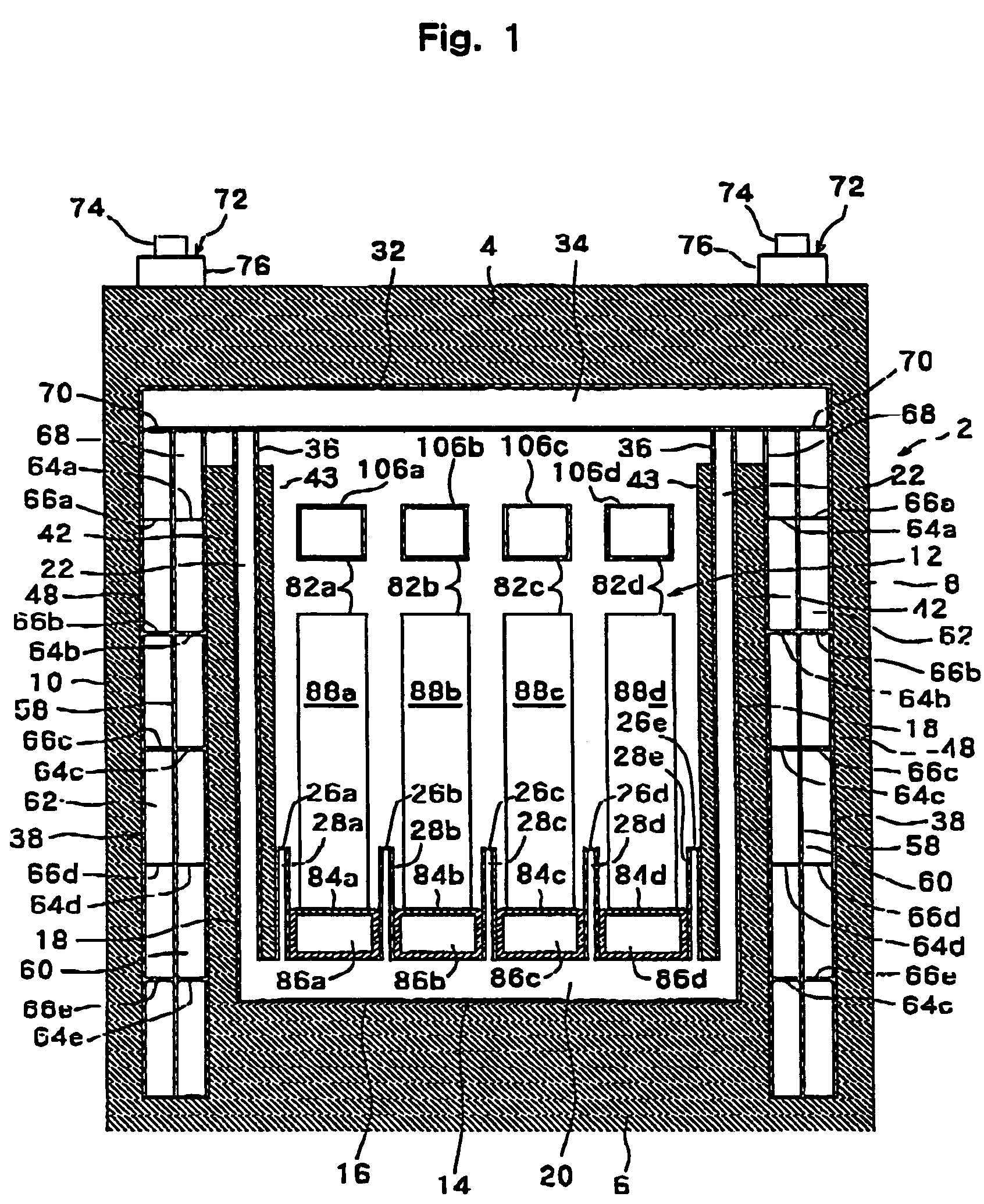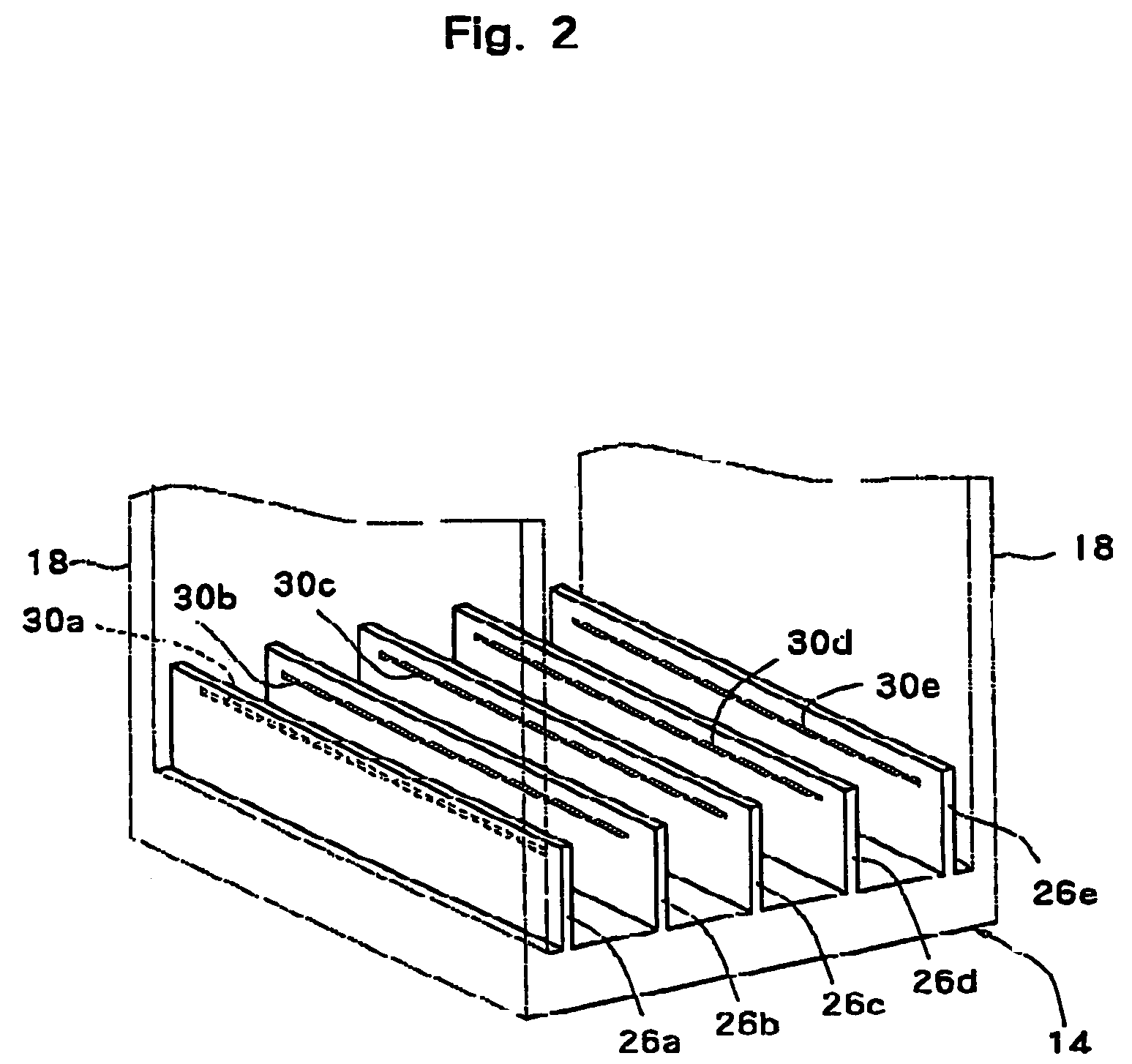Fuel cell assembly and electricity generation unit used in same
a fuel cell and assembly technology, applied in the direction of cell components, cell components, fused electrolyte fuel cells, etc., can solve the problems of insufficient utilization of waste heat, large assembly volume, and insufficient heat dissipation into the atmosphere, and achieve the effect of suppressing direct heat dissipation and high efficiency
- Summary
- Abstract
- Description
- Claims
- Application Information
AI Technical Summary
Benefits of technology
Problems solved by technology
Method used
Image
Examples
Embodiment Construction
[0034]Preferred embodiments of a fuel cell assembly constructed in accordance with the present invention will now be described in further detail with reference to the accompanying drawings.
[0035]With reference to FIG. 1, the illustrated fuel cell assembly has a housing 2 which may be in a nearly rectangular parallelepipedal shape. Heat insulation walls formed from a suitable heat insulating material, i.e., an upper heat insulation wall 4, a lower heat insulation wall 6, a right heat insulation wall 8, a lest heat insulation wall 10, a front heat insulation wall (not shown), and a rear heat insulation wall (not shown), are disposed on the six wall surfaces of the housing 2. An electricity generation / combustion chamber 12 is defined in the housing 2. The front heat insulation wall and / or the rear heat insulation wall are or is mounted detachably or openably and closably. By removing or opening the front heat insulation wall and / or the rear heat insulation wall, the interior of the ele...
PUM
| Property | Measurement | Unit |
|---|---|---|
| temperature | aaaaa | aaaaa |
| open porosity | aaaaa | aaaaa |
| open porosity | aaaaa | aaaaa |
Abstract
Description
Claims
Application Information
 Login to View More
Login to View More - R&D
- Intellectual Property
- Life Sciences
- Materials
- Tech Scout
- Unparalleled Data Quality
- Higher Quality Content
- 60% Fewer Hallucinations
Browse by: Latest US Patents, China's latest patents, Technical Efficacy Thesaurus, Application Domain, Technology Topic, Popular Technical Reports.
© 2025 PatSnap. All rights reserved.Legal|Privacy policy|Modern Slavery Act Transparency Statement|Sitemap|About US| Contact US: help@patsnap.com



